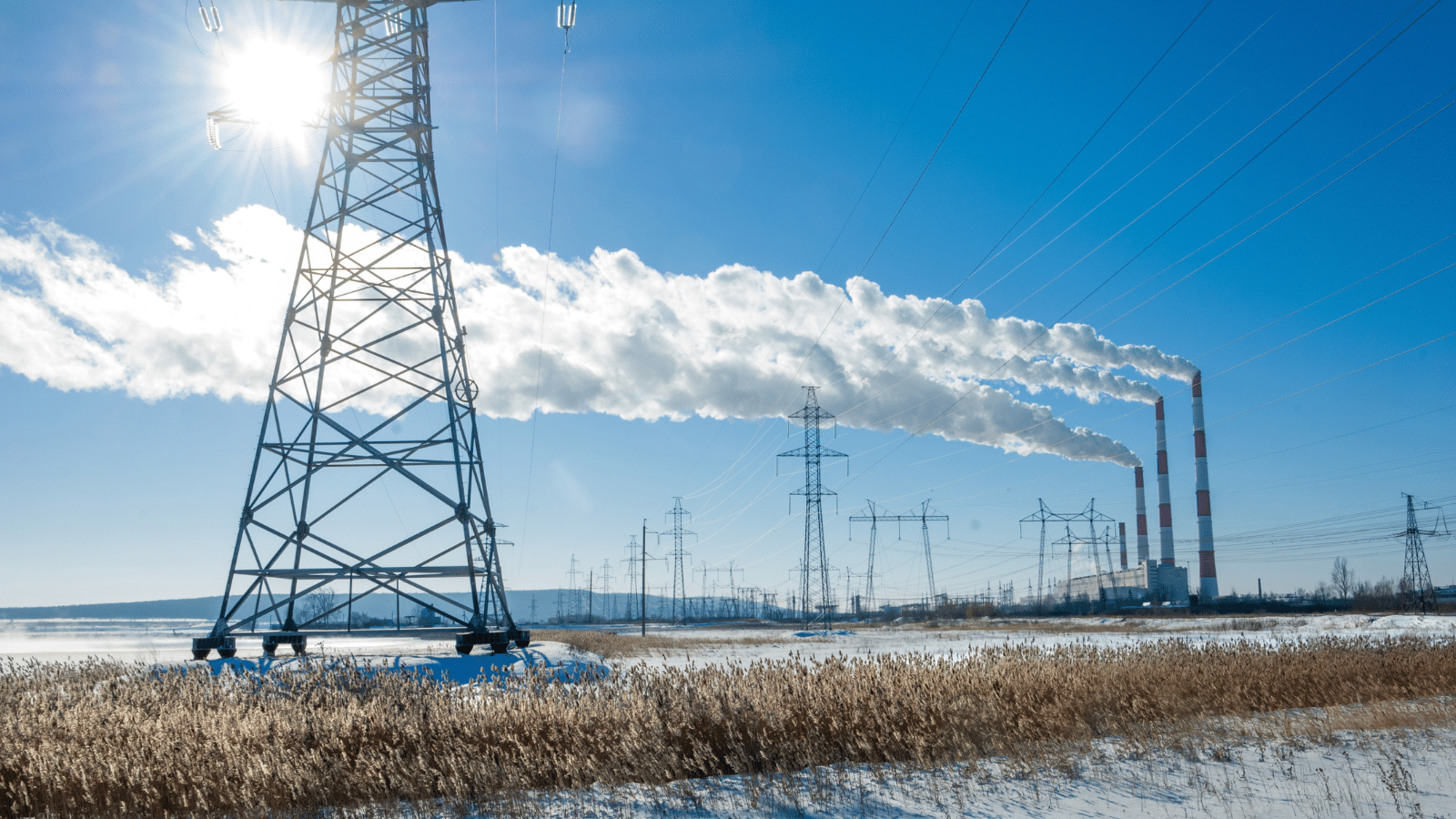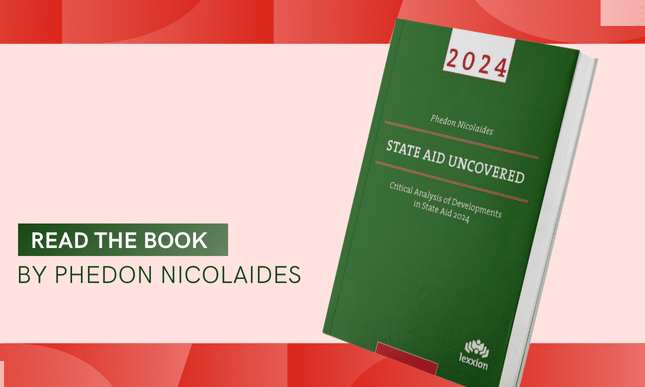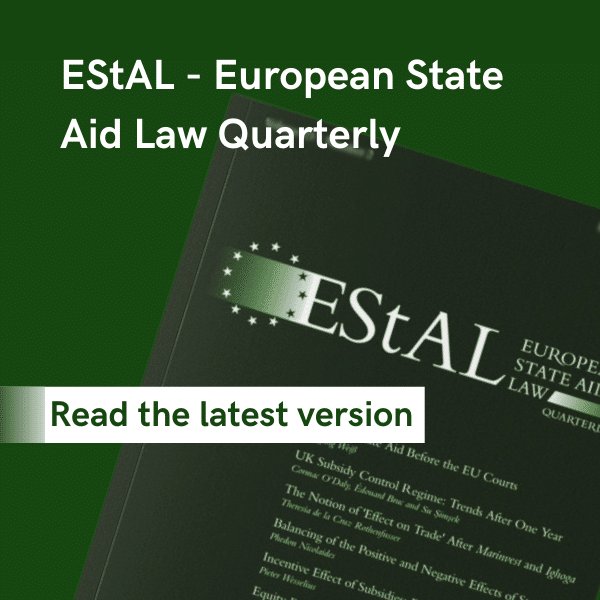
News:
The Commission has approved a draft block exemption regulation declaring certain categories of aid in the rail, inland waterways and multimodal transport sector compatible with the internal market on the basis of Article 93. The draft regulation can be accessed at:
https://eur-lex.europa.eu/legal-content/EN/TXT/?uri=OJ:C_202404539
Introduction
The EU’s Energy Efficiency Directive [EED] [Directive 2012/27, as last amended in 2023 by Directive 2023/1791] established a framework for measures to promote energy efficiency improvements across the EU. In particular, the EED sets a target of reducing final energy consumption by at least 11.7% by 2030. In this context, the Czech Republic notified an aid measure that was approved by Commission decision SA.108368.1 The purpose of the measure was to incentivise the production of electricity from high-efficiency combined heat and power generation. The Czech authorities estimated that the scheme would lead to a reduction of about 9.3 million tonnes of CO2 per year, than otherwise.
Form of aid
For installations with a capacity of less than 1 MW the aid will be in the form of a feed-in premium per megawatt hour [MWh] of produced electricity that would be paid over 15 years. The aid for installations with a capacity exceeding 1 MW will be determined through tenders.
Budget and eligibility
The budget for the measure is about EUR 3.2 billion over the 15-year lifetime of the eligible installations.
The eligible installations are high-efficient CHP plants, irrespective of the fuel they use, except solid fossil fuels, diesel and oil. That is plants using gas are eligible.
For installations up to 1 MW of capacity the premium would be set administratively per MWh of electricity actually produced. This is in line with point 107(b)(i) of the Guidelines on Climate, Environmental Protection and Energy [CEEAG]. The premium would be set by the energy regulator on an annual basis [i.e. it would be revised annually] and would be limited to the funding gap calculated in relation to reference projects.
According to the Commission decision, no support would be paid to any installation for electricity produced during hours in which the electricity market price would be negative.
Tenders
Beneficiaries with capacity exceeding 1 MW will be selected through tender which will be organised four times at different periods.
“(32) The conditions of the tendering procedure are open, transparent and non-discriminatory and are based on objective criteria defined ex ante in accordance with the objectives of the measure, minimising the risk of strategic bidding.”
“(33) The bid relates to the reference auction price that serves to determine the level of the premium after deduction of the electricity market price. Czechia will set the maximum reference auction price (bid cap) in order to ensure protection against potential overpriced bids and to eliminate the risk of overcompensation. Czechia submitted that the maximum reference auction price (bid cap) for each auction will be set with reference to the quantification of the relevant reference project, […], and it will reflect the current conditions on the energy commodity market (in particular the prices of electricity, natural gas and emission allowances) and the development of other key inputs of the calculation (in particular investment expenditure, WACC and other operating costs)”.
“(34) The only selection criterion in the tender procedure is the value of the bid (the offered auction price in CZK per MWh). The lowest bids will be awarded funding until the amount of installed capacity that is being tendered is reached. The projects with the lowest bid per MWh of generated electricity are therefore ranked the highest and will be selected, incentivising companies to apply for lower subsidy amounts. The amount of funding will correspond to the individual offer of support submitted in the bid (pay-as-bid principle).” A report evaluating the bids will be published after each auction.
“(36) The budget of the measure takes into account the expected supply of projects and is set at a level that should ensure that the budget constitutes a binding constraint in a competitive allocation process, meaning that it expects that not all bidders will receive aid.”
Determining the need and amount of aid
In the case of non-tendered projects, the Czech Republic identified, through studies and public consultations, five reference projects on the construction and operation of CHP plants
of varying capacity. The plants would use natural gas and would have a lifetime of 15 years. These reference projects established the “factual scenarios”. The calculated funding gap without operating aid varied between CZK 2.2 million and CZK 178 million. For example, the reference project with the funding gap of CZK 178 million, the market price was CZK 611/unit of output, while a price of CZK 715/unit of output was needed to result in a Net Present Value of zero using a post-tax WACC of 6.12% [the cost of equity was 9.26% and the cost of debt was 4.04%]. [See paragraphs 44-48 of the Commission decision.]
According to the Czech authorities, “(49) in the absence of aid new and modernised projects of high-efficiency production of electricity in cogeneration with heat would not be undertaken and the counterfactual scenario would be to invest in a new heat-only generation from a natural gas boiler. Such a boiler is characterised by low acquisition costs and affordable implementation and represents the main competition for other methods of heating. According to Czechia, even in the longterm perspective, heat from a gas boiler will likely be one of the cheapest option for securing heat supplies and in the absence of support, it would replace more energy efficient technologies such as CHP.”
According to the data provided in the notification, at the market price of CZK 611/unit of output, gas boilers would break even [i.e. NPV of zero at WACC of 6.12%].
Therefore, the amount of aid for non-tendered projects would be equal to the funding gap so that the Internal Rate of Return would be equal to the WACC resulting in NPV of zero.
Assessment of the compatibility of the aid with the internal market
The Commission quickly concluded that the measure in question constituted State aid and proceeded to assess its compatibility with the internal market on the basis of the CEEAG and in particular the general compatibility criteria in section 3 of the CEEAG, and the specific compatibility criteria for the reduction and removal of greenhouse gas emissions including through support for renewable energy and energy efficiency in section 4.1 of the CEEAG.
This article focuses on the incentive effect and proportionality of the aid and the minimisation of adverse effects on trade and competition.
However, before reviewing those aspects of the compatibility assessment it is worth pointing out that the Commission now explains more precisely why a sub-sectoral scheme is selective, even though it may be rather obvious that it differentiates between undertakings which are in a comparable situation. “(63) The scheme is selective since aid will be awarded only to certain undertakings, specifically to CHP producers that comply with the eligibility criteria […], while other undertakings in a comparable legal and factual situation within that sector or other sectors (considering that all economic operators should in principle cover their own costs), are not eligible for aid and thus will not receive the same advantage.”
It should also be noted that the Commission considers that selectivity can arise from technical eligibility criteria and from the fact that the targeted undertakings receive public funding while other undertakings in the same or other sectors do not.
Incentive effect
With respect to the presence of an incentive effect, the Commission first recalled the relevant principles. “(76) In order to demonstrate the presence of an incentive effect, point 28 CEEAG requires Member States to identify the factual scenario and the likely counterfactual scenario in the absence of aid. Point 28 CEEAG further indicates that the Commission will examine the incentive effect based on the quantification referred to in Section 3.2.1.3 CEEAG.”
“(77) Czechia submitted that the measure has an incentive effect because it induces the beneficiaries to change their behaviour. To that end, Czechia states that, in the factual scenarios, thanks to the aid granted under the scheme, beneficiaries would invest in the construction of new CHP plants or in the modernisation of existing CHP plants. Czechia considers that the most likely counterfactual scenario in the absence of aid would be the beneficiaries not carrying out either type of project and investing in a new natural gas boiler. This is due to the fact that CHP installations are carried out mainly in local systems of centralised heat supply (apartment buildings, housing estates), civic amenities and industrial enterprises with increased heat demand which means that the beneficiaries of the scheme must ensure full heat supply in the first place and purchasing a CHP unit is ancillary to the heat generation. Given that the broader goal of the beneficiaries is to generate heat in the first place, the Commission finds such counterfactual scenario as credible.”
“(80) As arises from the calculations provided by the Czech authorities, the NPVs of the reference projects are negative. This means that it is very unlikely that any projects would be carried out without aid, in so far as high-efficient CHP production would not be financially viable. Producers would not be able to increase the price of their product to reach viability, since it competes with the electricity in market.”
The Commission also examined conformity with the formal incentive effect which is that the aided project must not start before the aid application. This was the case with respect to the tendered projects, but not so with respect to the projects that would receive direct aid.
“(84) As regards non-tendered support, in case of the green bonus, the legal bases of the scheme do not expressly require beneficiaries to submit their aid applications before starting the works on the corresponding installations. The measure also expressly covers installations that are commissioned between 1 January 2023 and 31 December 2025, it being understood that the concept of commissioning involves, not only the start of the works on the installation, but also their competition and the connection of that installation to the electricity distribution network. In these circumstances, the measure would not normally present an incentive effect.”
“(85) However, according to point 31(a) CEEAG, in certain exceptional cases, aid can have an incentive effect if it is granted automatically in accordance with objective and non-discriminatory criteria and without further exercise of discretion by the Member State, and if the measure has been adopted and is in force before works on the aided project or activity have started, except in the case of fiscal successor schemes, where the activity was already covered by the previous schemes in the form of tax advantages. In this respect, […], the forms and conditions of support, as well as its amount and duration are all already sufficiently detailed in the national legal bases to consider the aid under the scheme is granted automatically in accordance with objective and non-discriminatory criteria and without further exercise of discretion by the Member State. […] the measure was adopted and was already in force before any works on eligible projects started. The Commission therefore considers that the measure fulfils the conditions of the exception set out in point 31(a) CEEAG.”
“(86) Finally, point 32 CEEAG stipulates that aid granted merely to cover the cost of adapting to Union standards has, in principle, no incentive effect. […] where generation unit do not comply with Union standards at the moment of the application for aid, Czechia will account for the cost of compliance with the applicable standards in the counterfactual scenario. Therefore, aid does not cover the cost of adapting to Union standards and the requirements of point 32 CEEAG are considered to be fulfilled.”
Proportionality of the aid
“(109) Point 103 CEEAG states that aid for reducing greenhouse gas emissions should, in general, be granted through a competitive bidding process, while point 104 CEEAG explains that this bidding process, should, in principle, be open to all eligible beneficiaries to enable a cost effective allocation of aid and reduce competition distortion.”
“(110) Point 49 CEEAG sets out the conditions under which aid allocated through a competitive bidding process can be considered proportionate, while point 50 CEEAG explains that the selection criteria used or ranking bids should put the contribution to the main objectives of the measure in relation with the aid amount requested by the applicant.”
“(112) The bidding process is open, clear, transparent and non-discriminatory for all eligible installations […], and therefore complies point 49(a) CEEAG. The detailed tender criteria are made public in advance, at least two months before the deadline for submitting a bid, therefore complying also with point 49(b) CEEAG.”
“(116) The Commission notes that the sole ranking criterion in the tenders is the value of the bid […], more specifically the amount of aid requested per unit of electricity produced (CZK/MWh). As the objective of the scheme is the production of CHP electricity, the Commission considers this criterion to be appropriate and straightforward to implement.”
“(118) The non-tendered aid (green bonus) is granted to installations capacity up to 1 MW which are considered small projects as defined in point 107(b)(i) CEEAG. In that case, the aid can be granted without a competitive bidding process, in line with point 107(b) CEEAG”.
“(119) For the aid granted without competitive bidding, point 48 CEAG explains that State aid is considered to be proportionate if the aid amount per beneficiary is limited to the net extra cost necessary to meet the objective of the aid measure compared to the counterfactual scenario in the absence of aid. Point 51 CEEAG requires Member States to determine the net extra cost by comparing the profitability of the factual and counterfactual scenarios, taking account of all the main costs and revenues, the estimated WACC of the beneficiaries and the NPV of the project cash flows over its lifetime.”
Avoidance of undue distortions of trade and competition
“(132) Point 121 CEEAG states that aid which covers costs mostly linked to operation rather than investment should only be used where the Member State demonstrates that this results in more environmentally-friendly operating decisions. Point 122 CEEAG states where aid is primarily required to cover short-term costs that may be variable, Member States should confirm that the production costs on which the aid amount is based will be monitored and the aid amount updated at least once per year.”
“(133) Aid granted under the scheme is provided in the form of ongoing payments. Nevertheless, the Commission notes that the scheme covers both the costs linked to the investment and the operation and is not meant to cover costs mostly linked to operation. The aid granted under the scheme closes the funding gap and is needed to trigger the initial investment. In any event, the scheme is not aimed at primarily covering short-term costs.”
“(134) In any case, the main production costs which are variable on which the aid amount is based will be monitored on an annual basis and adjusted […], which will also prevent the possibility of windfall profits and overcompensation due to unexpectedly high market revenues.”
“(139) The Commission considers that support under the measure does not lead to the lock-in of gas-fired energy generation and does not displace the deployment of clean technologies and their use. The Commission thus concludes that the notified measure complies with the requirements in point 127 and 129 CEEAG.”
“(142) Point 132 CEEAG states that Member States should demonstrate how the proposed measure will not lead to distortions of competition, for example, through increased market power, should the measure be expected to benefit a particularly limited number of beneficiaries.”
“(143) In the analysis of the measure, the Commission did not find obvious indications of non-compliance with the ‘do no significant harm’ principle.”
“(144) The Commission considers that the measure is intended to support a number of beneficiaries and of different types, so that it is not expected that the scheme will benefit a particularly limited number of beneficiaries or an incumbent beneficiary.”
Conclusions
The notified scheme is a textbook case of a well-designed intervention to stimulate the production of greener energy. The aid for both tendered and non-tendered projects will not exceed what the corresponding reference project needs to break even. In this way, the necessity and proportionality of the aid is ensured without causing any undue negative effect on competition and trade.



